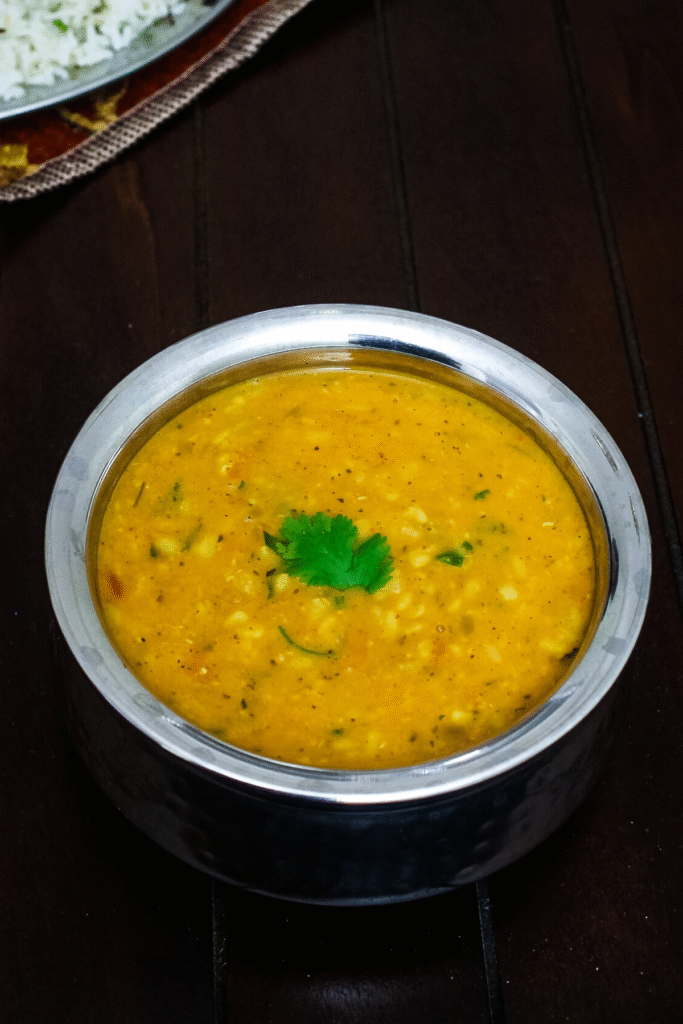This Dhaba-Style Urad Dal is a comforting, indulgent North Indian lentil dish that brings the rustic charm of roadside eateries straight to your kitchen. Made using split white urad dal (also known as dhuli urad dal), this dal is simmered with a robust base of sautéed onions, ripe tomatoes, fresh ginger-garlic paste, and a generous amount of aromatic spices. What sets it apart is the rich, velvety texture enhanced by a touch of fresh cream or butter, giving it that signature creamy and luxurious dhaba taste.
Despite its decadent flavors, this dal is surprisingly easy to prepare and comes together in just 30 minutes, making it perfect for weeknight dinners or last-minute guests. It pairs wonderfully with jeera rice, tandoori roti, or even a flaky paratha. A final tempering of ghee with a sprinkle of kasuri methi and garam masala takes it to the next level, infusing it with authentic Punjabi flair.
This homestyle yet restaurant-inspired dal is a must-try for anyone who loves earthy, wholesome, and soul-satisfying Indian meals.
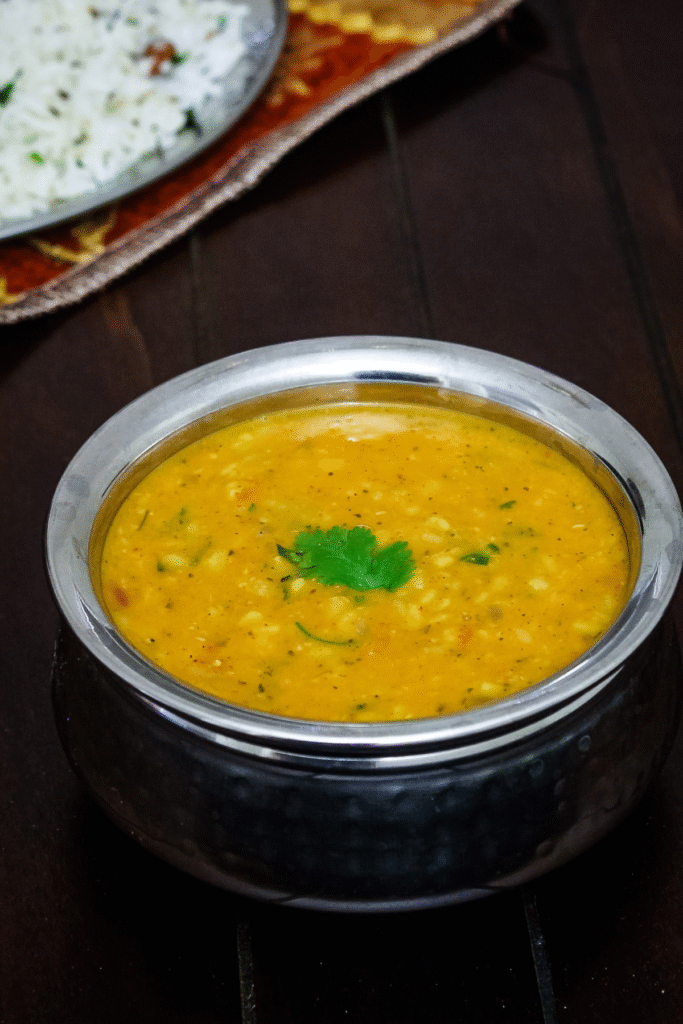
Urad Dal Types
In Indian grocery stores, you’ll commonly find three main varieties of urad dal, each with its own culinary purpose and distinct characteristics:
- Split White Urad Dal (Skinless): This variety is made by removing the black skin and splitting whole urad dal, resulting in smooth, ivory-colored lentils. It has a soft texture when cooked and is commonly used in dishes like idli, dosa batter, and creamy dals due to its mild flavor and ease of cooking.It cooks faster than other types and has a soft, creamy texture when cooked. This is the type used in our dhaba-style urad dal recipe, where it easily absorbs the rich, spicy flavors of the masala, creating a hearty and comforting dish. Its quick cooking time and smooth consistency make it ideal for everyday curries and dals.
- Split Urad Dal with Skin: This variety retains the black outer skin, giving the lentil a more earthy and rustic flavor. It takes slightly longer to cook than the skinless version but offers more fiber and a unique bite. It is a key ingredient in the traditional North Indian dish known as maa chole ki dal, where it is typically cooked along with chana dal (split Bengal gram). The combination gives the dish a wonderful contrast in texture—creamy from the urad and nutty from the chana dal.
- Whole Urad Dal (Black Lentils): This is the unprocessed, whole form of urad dal with the black skin intact. It has a deep, rich flavor and requires a longer cooking time, often needing to be soaked before use. Whole urad dal is famously used in the iconic dal makhani, a slow-cooked Punjabi delicacy that combines these black lentils with kidney beans (rajma), cream, and butter for a luxurious finish. I also like to include whole urad in mix kathol, a hearty medley of legumes that is often prepared during festive or special occasions, offering robust flavor and satisfying texture.
❤️ About This Dhaba Style Urad Dal Recipe
Taste & Texture:
- Moderately spiced, with room to dial it up or down based on your heat preference.
- Richly indulgent with a velvety, buttery finish—capturing the soul-soothing warmth of classic North Indian comfort cuisine.
- Ultra-creamy, without needing cream—thanks to urad dal’s naturally velvety, slightly mucilaginous consistency once fully cooked.
- Hints of smokiness woven into the dish evoke the rustic charm of roadside dhaba meals.
Comforting Meal Pairing: Create a soul-satisfying North Indian platter by pairing this dal with steamed basmati rice or jeera rice. Add crunchy kachumber salad, a crisp papad, and a tangy Indian pickle on the side. For a heartier option, enjoy it with ajwain-infused parathas or flavorful masala parathas—perfect for scooping up every creamy bite.
🧾 Ingredient Notes
- Split White Urad Dal (Skinless): This variety of urad dal is dehusked and split, resulting in a creamy white appearance. When pressure cooked, it turns soft with a naturally creamy and slightly mucilaginous (slimy) texture, which is a hallmark of this lentil. However, if you prefer a more structured texture with less sliminess, an easy technique is to dry roast the dal in a heavy-bottomed pan for a few minutes until it turns aromatic and lightly golden. This process enhances the nutty flavor and also improves the final consistency of the cooked dal.
- Butter – the Dhaba Way: Authentic dhaba-style dals are incomplete without the richness of white butter (makhan), which is traditionally churned at home and has a softer, fresher taste than store-bought yellow butter. It melts beautifully into the dal, imparting a luxurious, velvety texture and depth. If white butter isn’t available, you can use unsalted butter or even a small amount of fresh malai (milk cream) as a substitute for a similar richness.
- Signature North Indian Masala Base: The heart of any good dal lies in its masala. This classic North Indian blend is created by slowly sautéing finely chopped onions, ripe tomatoes, ginger, garlic, and green chilies. This base is further enhanced with a few staple spices like turmeric, red chili powder, coriander powder, and garam masala. Cooking this masala slowly until the oil begins to separate ensures a deep, layered flavor that infuses the dal with warmth and character.
- Smoked Paprika – A Modern Touch for Smoky Depth: While traditional dhaba dals often get their smoky aroma from coal smoking (dhungar method), a convenient alternative for home cooks is to use smoked paprika. Just a small amount of this spice lends a subtle but distinct smokiness, mimicking the flavors of roadside eateries without the fuss.
- Kasoori Methi – The Secret Ingredient: Dried fenugreek leaves, known as kasoori methi, bring a slightly bitter, earthy note that elevates the entire dish. To unlock its aroma, always crush the leaves between your palms before adding them to the simmering dal. This releases the essential oils and intensifies the flavor, giving your dish that unmistakable dhaba-style punch.
- Lemon or Lime Juice – For Brightness and Balance: A final squeeze of fresh lemon or lime juice at the very end of cooking lifts the heaviness of the dal and adds a refreshing brightness. It also balances out the richness of the butter and the spice of the masala, rounding out the dish with a gentle tang. Avoid adding citrus while the dal is simmering, as the heat can dull its fresh flavor.
👩🍳 How To Make Urad Dal Recipe? (Stepwise)
1) Take lentils in a colander and wash beneath running cold water until water runs clear. Or wash them in a bowl 2-3 times until the water is not cloudy any longer. Take washed dal in a pressure cooker along with new water.
2) Include salt and turmeric powder, red chili powder and blend well.
3) Cover the cooker with a top, and put the weight on. Cook on medium warm for 2-3 shrieks or until dal is cooked to delicate. Let the pressure go down by itself and open the lid.
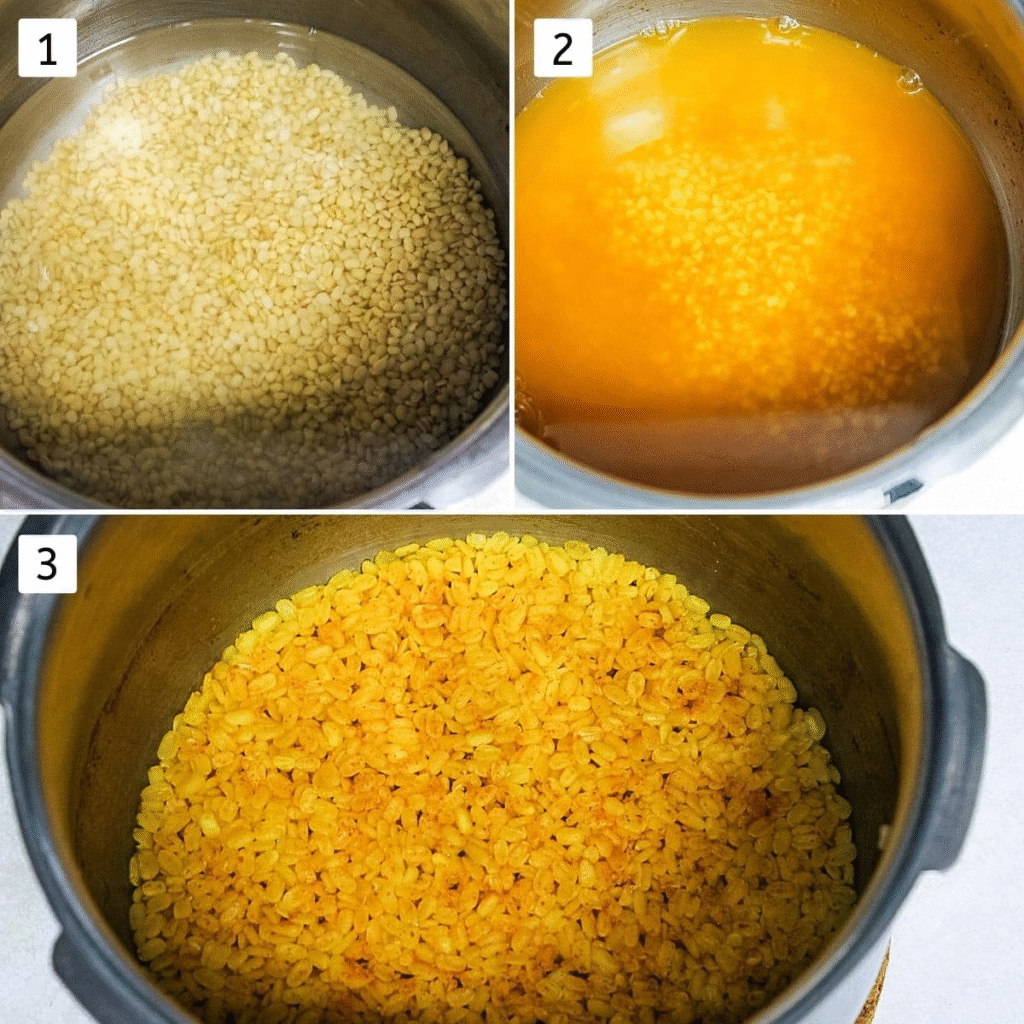
4) White dal is pressure cooking, begin cooking onion tomato masala on another stove. Warm the oil in a skillet or kadai on medium warm. Once hot include chopped onion and sprinkle a small salt to speed up the cooking process.
5) Cook until onions are delicate and translucent or light brown in color.
6) Include ginger, garlic and green chili.
7) Blend and saute for a miniature or until the crude scent of ginger garlic goes away.
8) Include tomatoes.
9) Blend and cook until tomatoes are delicate and nearly mushy.
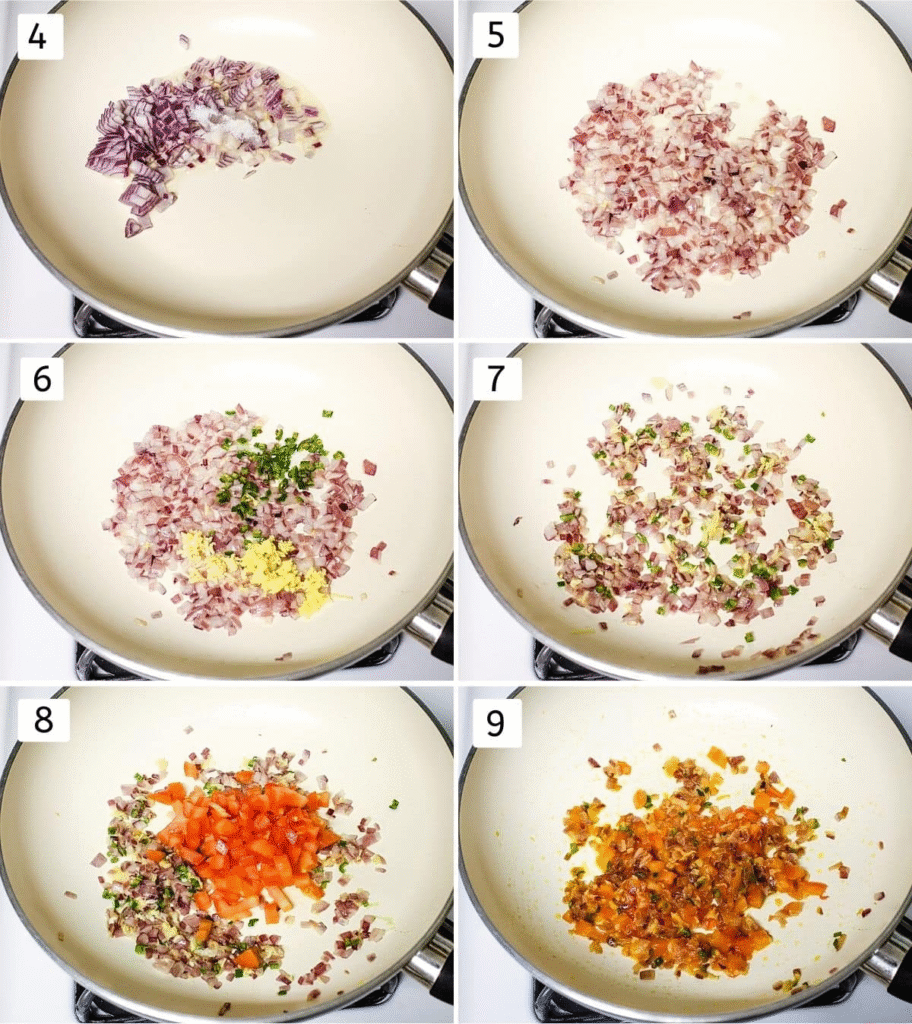
10) Include cooked dal along with a few more water. Include smoked paprika as well for a smokey flavor.
11) Blend and stew on moo for 7-8 minutes. Do mix in between to make beyond any doubt that dal is not staying to the pan.
12) Include butter and let it melt.
13) Include garam masala and kasoori methi. Blend well.
14) Finally, press the new lemon or lime juice and stir.
15) At last, embellish with crisply chopped cilantro
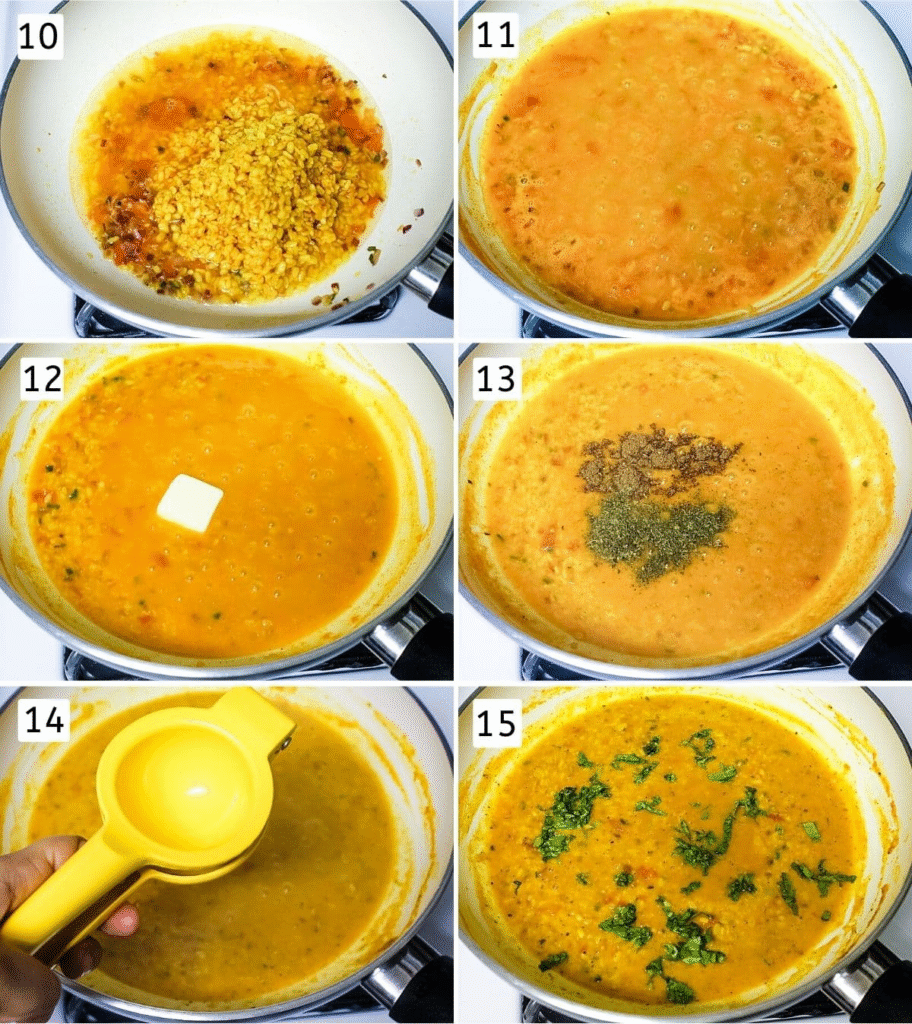
💭 Expert Tips
- Smoky Aroma Shortcut: For that signature smokiness, we’re using smoked paprika. If you want a more authentic flavor, try the dhungar (coal smoking) method—details can be found in the dal tadka recipe.
- Customizable Heat: Easily tailor the spice to your taste by adjusting the quantities of green chilies and red chili powder.
- Recipe Flexibility: This recipe is easily scalable—feel free to double or triple the ingredients to serve a larger crowd.
- Storage Tips: Store the leftover dal in an airtight container in the refrigerator; it stays fresh for 2–3 days. Do note, the dal thickens as it cools and continues to do so after refrigeration—just add a splash of water while reheating to bring it back to the desired consistency.
🍽 How To Serve Urad Dal?
- This comforting dal pairs beautifully with steamed basmati rice, jeera rice, or lightly spiced pulaos such as peas pulao or mushroom pulao.
- You can also enjoy it with Indian flatbreads like tandoori roti or soft, fluffy naan for a heartier option.
- For a complete North Indian-style meal, serve alongside crunchy kachumber salad, crisp papad, a spoonful of tangy pickle, and a chilled glass of salted lassi.
